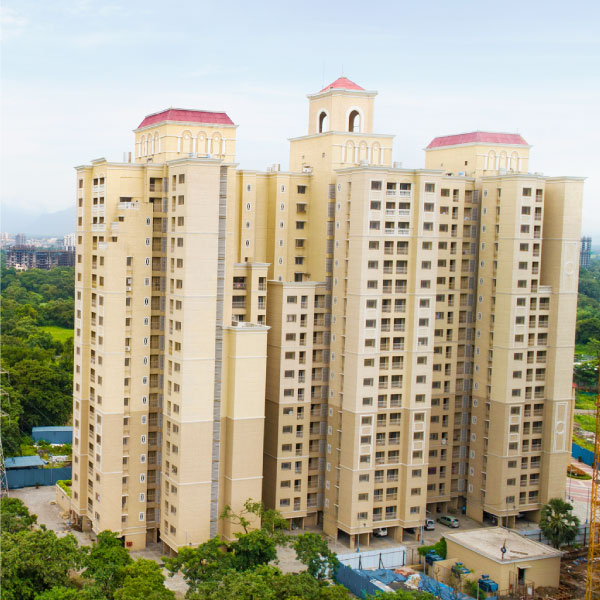Stamp Duty & Registration Charges in Mumbai – Complete Guide
Last Updated on, January 25th, 2024

In the Indian real estate market, stamp duty and registration are mandatory for any property transaction. This blog will throw light on the concept of stamp duty and registration, their importance and stamp duty and registration in the areas of Mumbai, Thane and Navi Mumbai.
What Is Stamp Duty and Registration?
Stamp duty is a tax levied by governments on property transactions in India. Payment of stamp duty gives a document legal status. Once stamp duty is paid, the document can be admitted as evidence in a court of law. Stamp duty ensures the authenticity of the document. It is also a key source of revenue for the Government as it generates funds for public projects and services. Stamp duty is an additional cost charged above the cost of the actual property. It is calculated as the percentage of the property’s sale value.
Property registration is the official recording of a property transaction in the public records, ensuring legal ownership and preventing fraud. It serves as legal proof of ownership and is essential for transparency and validation of property transactions.
Why is It Important to Pay Stamp Duty and Register a Property?
Registration of a property in one’s name is a crucial and mandatory step for the following reasons:
1. Legal Proof of Ownership
Registration of property provides legal evidence that the person mentioned in the document is the rightful owner of the property. It confirms that the property has been transferred to that person’s name.
2. Creation of Public Record
Once a property is registered, it becomes a part of the public record. Anyone can check these records to verify the ownership of a property before making a purchase. This is especially useful for potential buyers to ensure that the property they are interested in has a clear title without any disputes.
3. Transparency in Transaction
Registration ensures that the entire transaction is transparent. All details, including the price of the property, details of the previous owner, and the terms and conditions, are recorded in the public domain, reducing the chances of fraud.
4. Prevention of Fraud
Registration helps prevent potential fraud and illegal sales. Once a property is registered in a person’s name, no one else can claim ownership of that property. It also ensures that the seller cannot sell the property to multiple buyers.
5. Rights over the Property
Registration gives the owner certain rights over the property, such as the right to sell, lease, or mortgage. Without registration, these rights might not be legally enforceable.
Paying stamp duty and registering a property is a vital process that safeguards the rights and interests of the property owner, ensures transparency in property transactions, and helps in the proper legal and administrative documentation of property ownership.
Stamp Duty & Registration Charges in Mumbai, Navi Mumbai & Thane in 2023
Stamp duty rates in Mumbai (and Maharashtra) are determined by the Maharashtra government and can vary based on the type of property (residential, commercial), its location, and the gender of the buyer (some concessions may be available for female buyers).
| Cities | Stamp duty % |
|---|---|
| Mumbai | 6%, including 1% metro cess |
| Navi Mumbai | 7%, including 1% metro cess, transport surcharge and local body tax |
| Thane | 7%, including 1% metro cess, transport surcharge and local body tax |
Stamp duty rates are usually a percentage of the property’s market value (determined by the ready reckoner rate) or the agreement value, whichever is higher.
What is the Ready Reckoner Rate?
The “Ready Reckoner Rate” (often just referred to as “Ready Reckoner” or “Circle Rate” in some parts of India) is the standard value of an immovable property, such as land or a building, set by the respective state government. It is the minimum rate at which a property can be registered in case of its transfer. Here’s a deeper look into its significance:
1. Benchmark for Property Valuation
The Ready Reckoner Rate is used as a benchmark to determine the value of a property for payment of stamp duty and registration fees during property transactions.
2. Government Revenue
By setting a minimum value for properties in different areas, the government ensures a consistent revenue stream from stamp duty, even if the actual transaction value is lower than the Ready Reckoner Rate.
3. Prevents Undervaluation
It acts as a measure to prevent the undervaluation of properties during transactions. With the Ready Reckoner Rate in place, the minimum stamp duty payable is based on this rate, even if the transaction value is lower.
4. Updated Periodically
The rates are usually updated annually to account for changes in the property market and other economic factors.
5. Varies by Location
The Ready Reckoner Rate can vary based on the location of the property, its type (residential, commercial, industrial), and other factors. Different areas within a city or state can have different rates based on their perceived value and demand.
6. Reference for Buyers and Sellers
It provides a reference point for potential buyers and sellers to understand the value of a property in a particular area.
The Ready Reckoner Rate is a tool used by state governments in India to standardize property valuations, ensure a fair collection of revenues, and provide transparency in property transactions.
The Ready Reckoner Rate is updated from time-to-time. You can check the latest rates on the Government website here (link https://igrmaharashtra.gov.in/ )
Example of Ready Reckoner Rate
Suppose the RRR for a property in a particular area is ₹1 crore, but the actual transaction value is ₹1.2 crore. If the stamp duty rate is 5%, then:
Stamp duty based on RRR: ₹1 crore x 5% = ₹5 lakhs
Stamp duty based on transaction value: ₹1.2 crore x 5% = ₹6 lakhs
Since the stamp duty based on the transaction value is higher, ₹6 lakhs would be the stamp duty payable.
We hope you found this article useful and have understood the importance of stamp duty and registration in property transactions.














